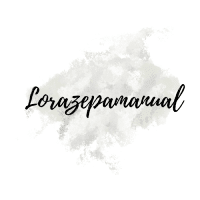In the age of digital communication, the world has seen a radical shift in how information is disseminated and consumed. With the emergence of social media platforms, the ways in which we handle public health crises have also changed. Social media has become a powerful tool in the promotion of health awareness and communication during times of health crises, particularly evident during the COVID-19 pandemic. This article will delve into the various ways social media campaigns are effectively addressing public health crises.
Harnessing the Power of Social Media in Public Health Communication
Social media platforms have become an integral part of our daily lives. Facebook, Twitter, Instagram, and other platforms are not only used for personal communication but have evolved into channels for public health messaging. They serve as catalysts for change, promoting healthy behaviours and fostering a culture of health awareness.
Also read : How Does the Use of Adjustable Sit-Stand Desks Influence Workplace Wellness?
Studies available on PubMed and Crossref consistently show the impact of social media in shaping health behaviours. For instance, a study found that social media campaigns were instrumental in increasing the audience’s knowledge and awareness about the H1N1 virus during the 2009 pandemic.
Utilizing Targeted Content for Audience Engagement
Engaging the audience is a vital part of any successful social media campaign. It involves creating content that resonates with the public and prompts them to take specific health actions.
In parallel : What Are the Benefits of Forest Bathing for Urban Residents with High Stress Levels?
In the context of public health crises, content that is relatable, easy to understand, and actionable is vital. For instance, during the COVID-19 pandemic, health authorities used social media to share infographics, short videos, and simple texts to explain the virus, preventative measures, and the importance of getting vaccinated.
Healthcare agencies can also use analytics provided by social media platforms to monitor the reach and engagement of their posts. This data can inform future content creation and campaign strategies, ensuring messages are effectively reaching the intended audience.
Leveraging Influencers and Key Opinion Leaders
In the world of social media, influencers and key opinion leaders play a crucial role in shaping public opinion. They can serve as trustworthy sources of information, especially in times of health crises where misinformation can easily spread.
Influencers with a significant online following can amplify the reach of public health messages. For instance, during the COVID-19 pandemic, influencers were seen promoting hand hygiene, mask-wearing, and vaccination on their platforms. These campaigns not only reach a larger audience but also encourage followers to adopt these healthy behaviours through the power of social proof.
Healthcare agencies can collaborate with influencers who align with their mission and values, ensuring that health messages are conveyed authentically and effectively.
Encouraging Online Community Participation
Creating an online community can be a powerful strategy for public health promotion. Through community engagement, individuals can share their experiences, ask questions, and support each other, which can significantly improve health outcomes.
Online communities can be fostered on platforms like Facebook and Reddit, where group discussions and posts can be made on specific health topics. These communities can also be used to disseminate accurate health information and debunk myths, playing a crucial role in managing health crises.
Healthcare agencies should engage in these online communities, providing expert advice and moderating discussions to ensure the spread of accurate and helpful information.
Ensuring Transparency and Trust
In times of public health crises, transparency and trust become paramount. Social media platforms provide an opportunity for healthcare agencies to communicate directly with the public, providing real-time updates and addressing concerns.
Transparency fosters trust, which is essential for the public’s compliance with health directives. It involves sharing both successes and challenges, acknowledging uncertainties, and correcting misinformation promptly.
In the COVID-19 pandemic, health organizations like the World Health Organization and the Centers for Disease Control and Prevention actively used social media platforms to share updates on the situation, explain measures taken to manage the crisis, and debunk myths surrounding the virus.
By harnessing the power of social media, public health campaigns can reach vast audiences, engage effectively, leverage influencers, encourage community participation, and foster trust. This not only aids in the management of health crises but also promotes a culture of health awareness and responsibility.
Cultivating Health Literacy via Social Media
While social media plays a pivotal role in health awareness and promotion campaigns, its potential to enhance health literacy is worth noting. Health literacy refers to an individual’s ability to obtain, understand, and use health information to make informed health decisions. Social media, with its widespread reach and real-time communication capabilities, provides an excellent medium for cultivating health literacy, particularly during public health crises.
The concept of health literacy extends beyond basic reading skills to include interpreting graphs, charts, and infographics, understanding health statistics and risk estimates, and applying health information to unique personal situations. In the age of information overload, improving health literacy through social media can empower individuals to sift through the vast sea of information and identify reliable and relevant health data.
Platforms like Facebook and Twitter have been used extensively for health education purposes. For instance, during the Ebola outbreak in 2014, the CDC used Twitter to disseminate information about the virus and precautionary measures. Short, easy-to-understand tweets were coupled with infographics, charts, and images to cater to various levels of health literacy. A systematic review of this strategy, available on PubMed and Google Scholar, showed increased health literacy about Ebola among the public.
Similarly, YouTube’s potential as a health education tool has been explored in various studies. Instructional videos on topics like CPR training, hand hygiene, and diabetes management have been found to improve viewers’ knowledge and skills, suggesting the platform’s effectiveness in enhancing health literacy.
Social media healthcare campaigns could, therefore, focus on delivering easy-to-understand, actionable health information to foster health literacy. This can be particularly beneficial during public health crises, where understanding the disease and its implications can facilitate behaviour change and compliance with preventive measures.
The Double-Edged Sword: Managing Misinformation
While social media has immense potential in health promotion and crisis management, it’s also a breeding ground for misinformation. Fake news, hoaxes, and misleading health claims can spread rapidly via social media, creating unnecessary panic and confusion during health crises.
The COVID-19 pandemic saw an explosion of misinformation, from false miracle cures to conspiracy theories about the virus’s origins. This infodemic, as termed by the World Health Organization, posed a significant challenge to public health, as misinformation led to scepticism about vaccines and preventive measures.
To combat this, social media platforms have taken steps to flag and remove misleading content and promote accurate health information. For example, Instagram introduced a feature that directs users searching for COVID-19 related information to reliable sources like the WHO and CDC.
Healthcare agencies can aid in this fight against misinformation by actively debunking myths and false claims on their social media platforms. Using a systematic approach, they can monitor the viral spread of misinformation, identify common themes, and develop targeted communication strategies to address them.
Public health campaigns can also collaborate with influencers and key opinion leaders to disseminate accurate health information and debunk myths. This approach, coupled with community participation and engagement, can contribute significantly to curbing the spread of misinformation on social media.
Conclusion
As the digital age continues to evolve, the role of social media in addressing public health crises becomes increasingly crucial. Harnessing the power of social media for health communication, audience engagement, influencer collaboration, community participation, and transparency can significantly impact public health outcomes.
Social media’s potential to improve health literacy and manage misinformation offers promising avenues for further exploration. Future research could focus on innovative strategies to effectively leverage social media for health promotion and crisis management. By navigating the opportunities and challenges presented by social media, public health agencies can revolutionize health communication and education, fostering a culture of health awareness and responsibility.






